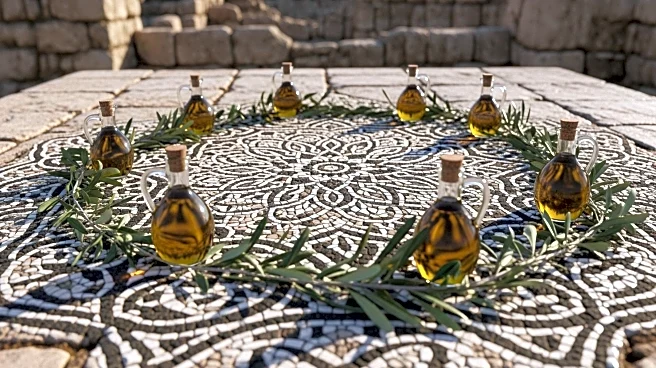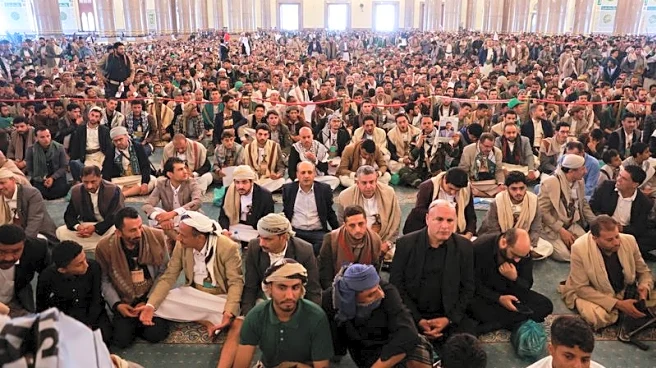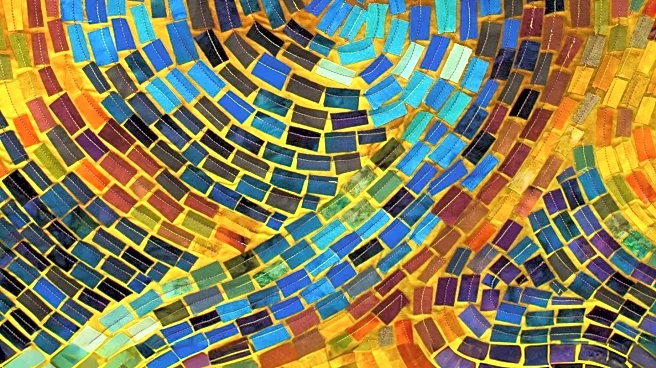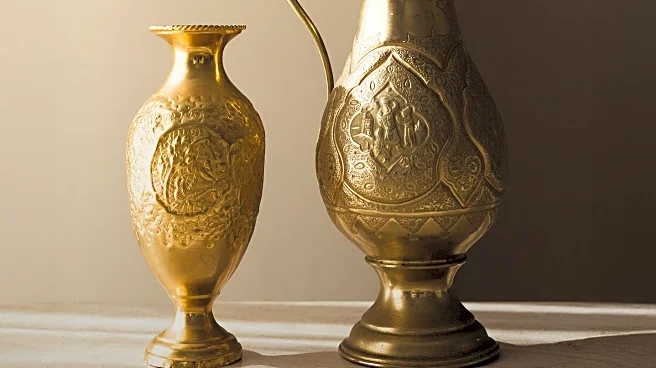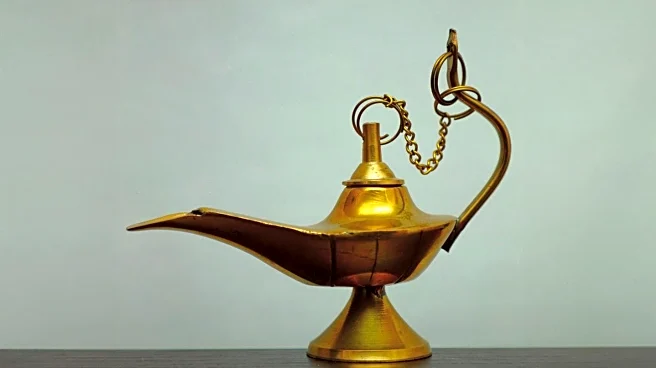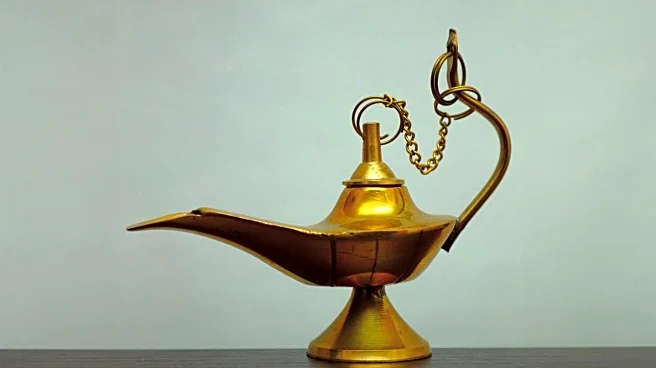What is the story about?
What's Happening?
An archaeological excavation in Kafr Qasem, Israel, has uncovered a wealthy ancient Samaritan estate dating from the fourth to the seventh century C.E. The site, managed by the Israel Antiquities Authority, features two main structures with mosaic flooring and an olive oil production facility. The mosaics, characterized by geometric patterns and depictions of fruits and vegetables like watermelon and artichoke, indicate the estate's Samaritan origins. The estate also includes a public mikveh, suggesting a focus on ritual purity. The excavation is being conducted rapidly due to nearby modern construction.
Why It's Important?
The discovery provides significant insights into the Samaritan community's lifestyle and religious practices during the Byzantine period in Israel. The presence of mosaic art without animal or human depictions aligns with Samaritan religious prohibitions, distinguishing it from other contemporary cultures. The estate's focus on olive oil production highlights the economic activities that sustained such affluent compounds. This find enriches the understanding of regional history and the cultural diversity of ancient Israel, offering a glimpse into the socio-economic dynamics of the time.
What's Next?
Further archaeological work is needed to fully understand the site's history and significance. The ongoing excavation aims to uncover more about the estate's transition from a luxurious residence to a more industrial facility. Researchers will continue to analyze artifacts and structures to piece together the estate's story, including its eventual abandonment, possibly due to an earthquake in 749 C.E. The findings may prompt additional studies on Samaritan settlements and their interactions with neighboring cultures.
Beyond the Headlines
The excavation underscores the challenges of preserving historical sites amid modern development. The rapid pace of construction in Kafr Qasem necessitates urgent archaeological interventions to salvage and document historical artifacts before they are lost. This situation highlights the ongoing tension between urban expansion and heritage conservation, raising questions about how best to balance these competing interests.
AI Generated Content
Do you find this article useful?
